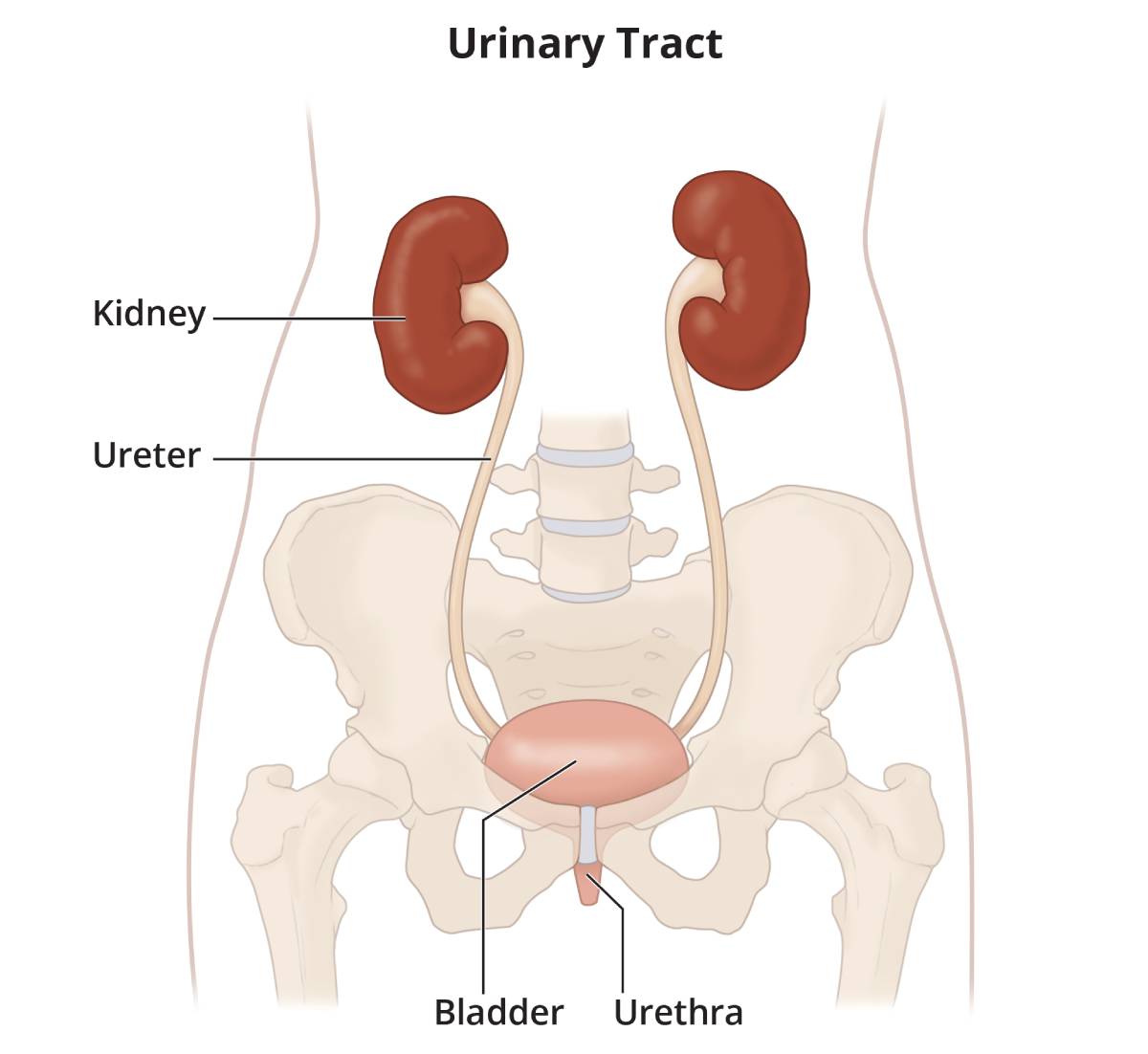Functions of the kidney 2: fluid balance
Have you ever wondered what the kidneys do and why they’re so important?
This article will cover what the kidneys are and one of the main functions of the kidney – fluid balance.

What are the kidneys?
The kidneys are organs shaped like kidney beans, located in your back. They are found on either side of your backbone. Most people have two kidneys; however some people may only have one. It is possible to live a normal and healthy life with just one kidney. Click here to read more about the effects of having one kidney.
The kidneys are very important organs that help maintain fluid balance in the body, alongside many other roles, as mentioned above. The kidneys form part of the urinary tract. Urine is made in the kidneys and flows from the kidneys to the bladder (via the ureters) where it is stored.

Click here to learn more about the functions of the kidneys.
How are the kidneys involved in fluid balance?
This part of the article will focus on the role the kidneys play in the balance of fluid and salts, including minerals such as sodium and potassium which are also known as electrolytes.
We will cover the following:
- The importance of fluid balance
- Water balance
- Sodium balance.
The importance of fluid balance
The kidneys are vital for ensuring the volume and components of bodily fluids are correctly regulated. Certain factors can disrupt the balance including dehydration, excessive salt intake and blood loss. It is therefore important that the body has systems in place to help manage any changes that may occur.

Water balance
The purpose of water balance is to ensure that the amount of water that enters the body (through food and drink) is equal to the amount of water that is excreted from the body (urine, sweat etc). Water intake is influenced by human behaviour, such as thirst, whereas water excretion is mainly regulated by the kidneys.
The main way in which the kidneys help control water excretion is by managing the amount of water that leaves the body in urine. The kidneys can either make urine concentrated, if water needs to be retained in the body; or dilute, if there is an excess level of fluid in the body. This is why your urine can sometimes look either pale or darker in colour – it is a good indication of hydration status.

The way in which the kidneys help control the amount of water excreted in urine is through the action of anti-diuretic hormone (ADH), also known as vasopressin. ADH is a hormone (chemical messenger) made in the hypothalamus, a structure deep within the brain.
It is ultimately released from the posterior pituitary gland, a pea sized gland at the base of the brain, where it can enter the bloodstream. When ADH reaches the kidneys it binds to specific cells within the late distal tubule and collecting ducts.
This leads to a chain of events that ultimately results in the insertion of water channels called aquaporins into the membrane of these cells. Aquaporins act as a passage that enables water to be reabsorbed into the blood, therefore making the urine more concentrated.
So. What causes ADH to be released in the first place?
ADH secretion is influenced by various mechanisms:
- The hypothalamus has specific receptors that are very sensitive to plasma osmolarity. Plasma osmolarity is a measure of the balance between solutes and fluid in the blood. Solutes are simply any substance that is dissolved in a solution e.g. salt. If we are dehydrated then the plasma osmolarity increases. This means there is a higher proportion of solutes compared to fluid. This is detected by the receptors on the hypothalamus therefore stimulating ADH secretion
- When there is a fall in blood pressure stretch receptors in the aorta and carotid arteries are activated, which stimulates ADH secretion
- When there is excess fluid in the body this causes an increase in blood volume entering the chambers of the heart. Stretch receptors within the heart are activated which leads to an inhibition of ADH secretion, enabling excess fluid to be lost through the kidneys.
Sodium balance
Sodium is the main solute present in extracellular fluids (e.g. blood plasma) and therefore is important in determining osmolarity.
:max_bytes(150000):strip_icc()/gettyimages-88175170-2000-40871c1cbb9442288b6a783588705e70.jpg)
ADH decreases the concentration of sodium by increasing water reabsorption. However, there are also mechanisms for reabsorbing sodium in the kidneys to prevent osmolarity decreasing below normal. The hormone involved is aldosterone.
When fluid volume in the body is low, this can cause low blood pressure. This activates the renin-angiotensin system (which will be covered in another article). Alongside stimulating ADH release this also causes aldosterone to be released from the adrenal glands. Aldosterone acts on the kidney and causes sodium to be reabsorbed through a specific transport mechanism. This ensures the correct electrolyte balance is maintained.
Summary
In this article we have discussed functions of kidney: fluid balance. We hope it has been useful.
Other resources
Functions of kidneys 1: waste removal
Functions of kidney 3: acid-base balance
Functions of kidneys 4: blood pressure control (makes renin)
Functions of kidneys 5: anaemia, blood cells and EPO (makes erythropoietin)
Functions of kidneys 6: vitamin D activation (activates cholecalciferol)
Functions of kidney 7: making prostaglandins.
Last Reviewed on 10 March 2024
